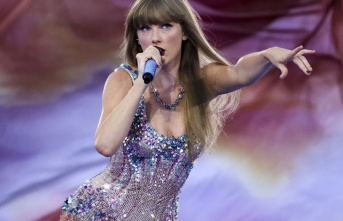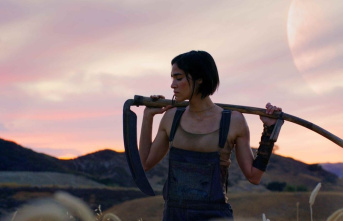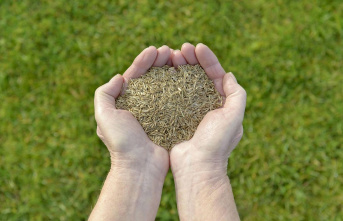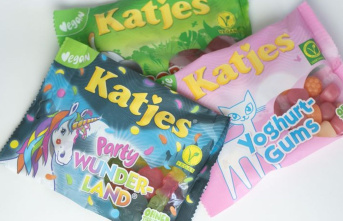MORE INFORMATION
T. S. Eliot: writing total of the avant-garde mystic In the fertile soil of T. S. EliotThe six researchers who looked eager from the first hour the past two January opening of the doors of the Library Firestone of the University of Princeton are not exactly groupies literary. Share the passion of the fans, but it was not a author alive that I moved, but the history of a relationship in which the main characters died half a century ago. They wanted to be the first in reading to 1,131 letters, still inaccessible to the public, the poet and Nobel laureate T. S. Eliot sent to the professor of dramatic art Emily Hale between 1930 and 1957. “It is a match burning. Eliot shows his side more intimate and hidden”, account to the phone with enthusiasm Lyndall Gordon, a professor at Oxford and author of the biography, T. S. Eliot, An Imperfect Life. “The other day, another of the researchers, and I embrace it, it is very exciting to go reading this. Are letters very long a person's complex”.
A cousin of Eliot introduced him to in 1912 to Emily Hale. The two came from the same circle of families bostonianas. He studied at Harvard and had already published The love song of J. Alfred Prufrock. She had grown up with her aunt and uncle, and aspired to be an actress or playwright, but his family didn't see it that well. Together they acted in a small role for friends in which they sang fragments of the novel of Austen's Emma.
One of the letters that Eliot sent to Hale. Shelley Szwast, courtesy of the Library of Princeton University Shortly before her departure for Europe in 1914, to stay in Oxford with his studies of philosophy, Tom is declared to Emily, but it doesn't seem to make her a proposition of marriage strong, and not feel that she showed much enthusiasm at his words. Hale realized soon that he had to earn the livelihood and began to teach theatre classes. His life has something of Jo, the character of little women.
A year after pleading to Hale, 26 years old, Eliot married the british, intense, stunning, and unstable Vivienne Haigh Wood. Inputs and outputs of sanatoria, and infidelities (including with Bertrand Russell), became this marriage in a way of the cross. The poet, whose work began to be published by Virginia Woolf in the Hogarth Press, and who later would work himself as an editor at Faber & Faber, he resumed the contact with Hale in 1927. Five years later, it was as a guest lecturer at Harvard, then visited Emily in California.
follow the travels and the letters between the poet and his beloved. After the death of Vivienne in 1947, however, do not propose marriage as she expected. The following year wins the Nobel prize and later was home with a young fan, Valerie, who had been his secretary at Faber. Finally, in 1957, Hale decides to donate the letters to Princeton where he worked the husband of one of her best friends, Willard Thorp, professor also managed to get hold of the papers of Scott Fitzgerald.
Lyndall Gordon, who has written biographies of Virginia Woolf, Henry James and Emily Dickinson, among others, is releasing a new book about T. S. Eliot and women, which will be released in 2022 in the british market to coincide with the centenary of the publication of barren Land. “Eliot greatly depended on women but was not promiscuous,” she says. The teacher stops at four of them: his mother, his first and second wives (Vivienne and Valerie), his English friend Mary Trevelyan, and Emily Hale, whom she considered to be fundamental, “the chosen one”, as the letters demonstrate. “You feel trouble to read things so personal. The relationship that remained was almost exclusively through the words,” he says. “Sometimes I think that morally my job as biographer is indefensible”.
On the cards now lee Gordon in Princeton —and if you add clippings, photos, and a text of Hale on the relationship— has heavy ban that was accessible to the public until 2020. There was a lot of expectation ahead of the opening of the season —in October broke down the tapes of copper sealed boxes—, but it has turned out that, in addition, the public was awaiting him a great fight on a deferred basis.
Eliot, informed Hale that he had donated his letters, he wanted to have the last word and gave instructions for that in the same moment in which the correspondence is made public disseminated a press release that he wrote and which is preserved in Harvard, where a large part of your file. Of the precise instructions that left suggests that the poet had no confidence in that Princeton complies with the embargo. “Emily Hale would have killed the poet in me; Vivienne was almost to my death, but maintained the poet alive,” he wrote. “The die is Vivienne, I realized suddenly that I was not in love with Emily Hale. Gradually I understood that he had been in love with only a memory, the memory of the experience of having been in love with her in my youth.”
Clarifies that he never had sex and who commanded him to burn the letters of Hale. His radical refutation and revision of their relationship seems straight out of a verse of The love song... “That was not what I meant at all / That is not it at all.” Eliot did not endure to imagine that more than a half century after his death was made public something he not in control.
Date Of Update: 12 January 2020, 02:00










